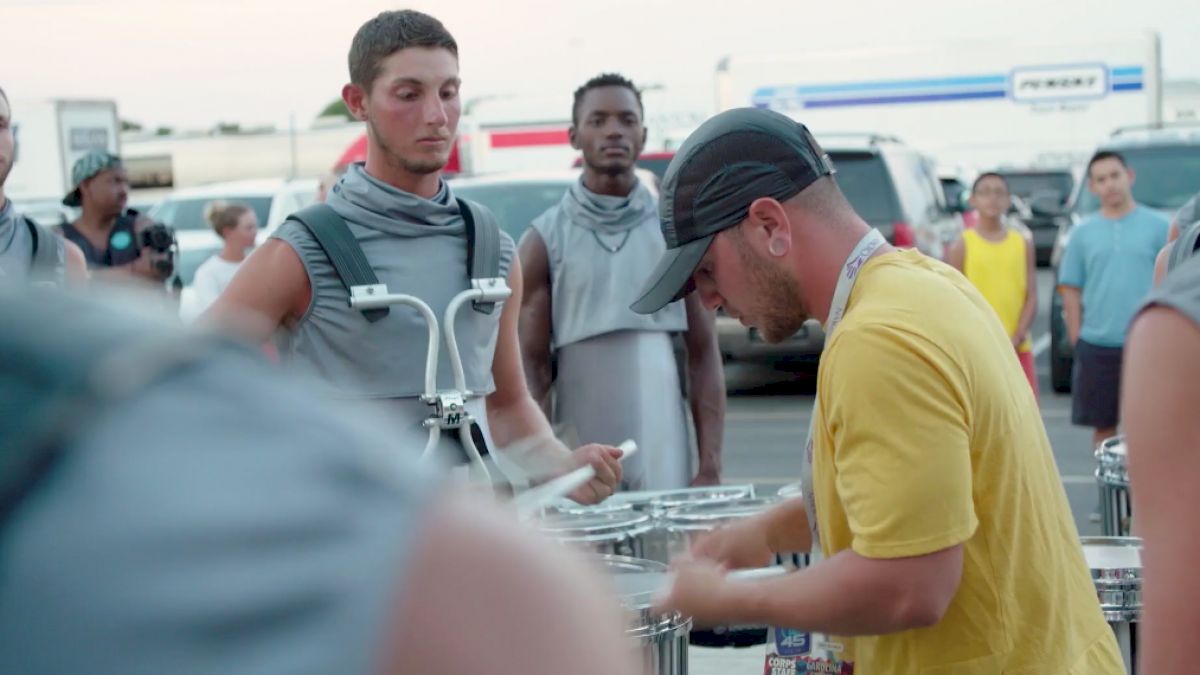Bent Leg Vs. Straight Leg: A Series By Dan Schack, Part 1
Bent Leg Vs. Straight Leg: A Series By Dan Schack, Part 1
Dan Schack uses his experience in the marching arts to take an analytical look at the straight leg vs bent leg marching techniques.

Unlock this article, live events, and more with a subscription!
Already a subscriber? Log In
Dan Schack is the Battery Coordinator/Choreographer of Carolina Crown Drum and Bugle Corps and the Creative Director of George Mason University Indoor Drumline. Outside of his musical endeavors, Dan is pursuing a Ph.D. in English at the University of Delaware.
Bent leg. Bicycle. “Cavies” style. Straight leg. East Coast. “Cadets” style.
Marching style is a highly debated topic within the visual corners of the Pageantry Arts. I confronted this extreme contrast head-on at my first visual block with the Cavaliers Drum and Bugle Corps at 2010 Spring Training.
A drill move in our opener demanded a 7-to-5 crab in halftime at 176 beats per minute (BPM). Stepping off, I confidently showcased powerful, straight legs, extending out of a rigid, high platform. All the visual instructors from my past (out on the East Coast) articulated their visual perspective clearly and essentially: straight leg is the only way to march. Period.
But, when I went up, everyone went down. My peers, who were either drum corps veterans or had at least previously experienced a basics block with the Cavaliers at a winter camp (I had jumped on in April), squatted low into the ground, gliding smoothly on the horizontal axis.
Their crab style had a much more crabby character to it, while I was rigid and militaristic, no crabbiness to be found. At the end of the rep, much laughter and friendly criticism were oriented my way. I was out of my element, and the differing marching styles made that clear as day.
Up to this point, I hadn’t even considered an alternative style, but here at Cavaliers, everything I knew about marching was being completely inverted.
Roll down to your heel on the backward march? Insanity.
Roll up through the foot to a ninety-degree angle with the toe on the forward march? Impossible.
And don’t even get me started on the oblique. There isn’t enough room in this article for that rabbit hole.
In this series of articles, I will attempt to negotiate and demystify some of the similarities and differences between the straight and bent leg marching styles. I will also provide some of my ideas as to which style is easier to perform, teach, and implement, and why one style may be preferable over the other.
It is my hope that these pieces can generate useful discussion as to which style is best suited for any one individual program, as I weigh the costs and benefits of each. Furthermore, I hope to enlighten readers to the potential of teaching a more hybrid, flexible approach that does not have to rely on one essential concept, but instead may borrow from either end of the visual technique spectrum.
This, I think, is the key to being a progressive and relevant visual mind.
Full Bent Leg Vs. Straight Leg Series by Dan Schack:
Part 1 - Introduction & Geographical Significance
Part 2 - Aesthetic & Articulation
Part 3 - Pitfalls/Accessibility/Training & Top-Down Perspective & Conclusion
Location, Location, Location
Depending on your geographical lineage, you probably have a strong affinity, or aversion, to one or the other. For traditionalist East Coasters, straight leg is the end-all-be-all of marching. Referencing back to our military heritage, straight leg technique is bold, clean, and easily digestible for any skill level.
For many Midwesterners and West Coasters, bent leg is the way to go. This marching style is fluid, original, and physically less taxing in many regards. Santa Clara Vanguard began experimenting with a more stylized marching technique in the late 1970s.
Picking up on SCV’s direction, The Cavaliers proved that bent leg could be implemented successfully and effectively between the Mid-90s to the Late 2010s, during which time they claimed a number of championships and visual caption awards.
Santa Clara Vanguard, now boasting a slew of The Cavaliers’ minds on their design and instructional staff, has again adopted the bent leg look, though somewhat augmented from The Cavaliers' concept.